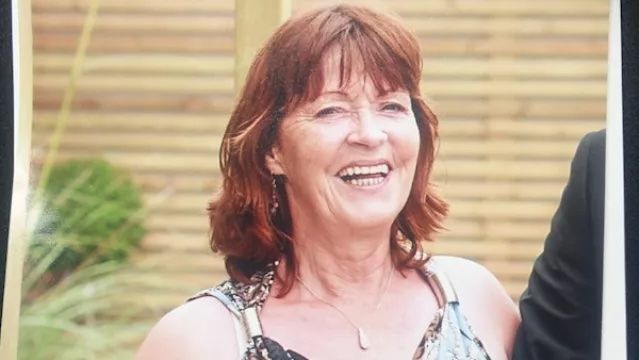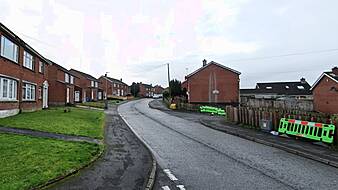A man who beat his partner's mother to death and chopped up and scattered her body around the Dublin and Wicklow mountains may have been subjected to a "slow burn provocation" similar to that suffered by victims of domestic abuse, a lawyer has told the Court of Appeal.
Kieran Greene's lawyers argued that the jury at his trial should have been allowed to consider that Patricia O'Connor provoked Greene (37) into killing her by assaulting him and threatening his children following years of difficulties between the pair.
Mrs O'Connor's siblings, friends, work colleagues and her son Richard O'Connor denied after the trial that she would have said the things Kieran Greene claimed. They accused him of "spiteful lies" and said they were hurt by how her character was "cruelly tarnished" by what he said.
Her siblings wrote in a statement to the court: "The people who truly knew her, her sisters, brothers, friends, work colleagues, her neighbours, will defend her kind, caring, loving nature; a jolly woman who sang out loud as she went about her day."
At Thursday's hearing before the three-judge appeals court Dominic McGinn SC, representing Greene, said that in his first garda interviews Greene claimed that before the killing, Mrs O'Connor attacked him leaving him shocked and dazed.
Greene said she told him she wanted him dead and then went through all the members of the household including Greene's children saying she wanted them all dead.
Mr McGinn told the three-judge court that the "history of animus" between them had left Greene in a similar position to a victim of domestic abuse where the cumulative effect of years of abuse can result in a relatively small event leading to a total loss of self-control.
Mr McGinn said the story told by Greene, "built up a picture that the deceased was a constant thorn in his side and the final straw included talking about his children and what she would do to them."
Provocation
Counsel said the thrust of what Greene had told gardaí was that he was shocked when she attacked him, that he was dazed and that his violence was spontaneous. In cases where a jury is allowed to consider provocation, they can find the accused guilty of manslaughter instead of murder if they find it is reasonably possible that the accused was provoked by the deceased into a sudden and total loss of self-control.
In Greene's trial the judge refused to allow the jury to consider provocation, saying there was no evidence that Greene had suffered a total loss of self-control.
Mr McGinn said the judge was wrong. He said there was enough evidence from Greene's garda interviews to suggest he was provoked and it should have been left to the jury to make the final decision.
In February 2020 the deceased's daughter Louise O'Connor, her granddaughter Stephanie O'Connor and Stephanie's father Keith Johnston were each found guilty of impeding the apprehension or prosecution of Greene, who is Louise's former partner. Mrs O'Connor's husband Gus O'Connor, who is now deceased, pleaded guilty to reporting his wife missing to gardaí while knowing that she was already dead.
On Thursday, Mr McGinn argued that Greene should not have been put on trial alongside Louise, Stephanie and Johnston. He said that the wording of the charges against them, which stated that Greene was the murderer, was prejudicial to Greene.
He said the difficulty could have been avoided by separate trials or by removing Greene's name from the other indictments. "When it's there in black and white, that is prejudicial," Mr McGinn said.
Mr McGinn also told the court that his client's primary defence was that Gus O'Connor was actually responsible for the murder. He explained that after admitting to killing Mrs O'Connor in his first garda interviews, Greene later retracted that statement, saying he had lied to protect Gus O'Connor, who he said was the real killer.
Hearsay evidence
At trial, Greene's lawyers were refused permission to read to the jury a statement given by Gus O'Connor to gardaí which they said showed he had given differing accounts of his relationship with his wife.
Mr McGinn said the judge should have allowed this hearsay evidence as it showed that Gus could "blow with the wind and say what suited him at the time." Counsel said this would have fitted Greene's narrative, "that Mr O'Connor was capable of killing his wife and blaming Mr Greene."
Further grounds of appeal included that the judge should have allowed the jury to consider finding Greene not guilty of murder but guilty of helping to dispose of Mrs O'Connor's body.
Mr McGinn also argued that the judge erred by refusing to allow the defence to call a psychiatrist who would have said that Greene's IQ scores put him in the lowest 3 per cent in the country for intellectual ability.
He said that this could have allowed the jury to understand why Greene was "imprecise" about the sequence of events around the murder. He said the jury could also have assessed whether someone at his intellectual level could have been persuaded to lie by someone more intelligent and manipulative than him.
Roisin Lacey SC, for the Director of Public Prosecutions, responded that there is no evidence that people with low IQs are more likely to lie. Going through the appeal grounds one by one, she said the alternative verdict of helping to dispose of the body could only have arisen if the jury first acquitted Greene of murder, which they did not.
She said the hearsay evidence of Gus O'Connor was not admissible. In relation to provocation, Ms Lacey said the trial judge was correct in finding that there was no evidence that Greene had suffered a total loss of self-control.
Mr Justice George Birmingham, presiding, with Mr Justice Patrick McCarthy and Ms Justice Isobel Kennedy, will deliver their judgment at a later date.
Missing person
Patricia's husband Augustine O’Connor was originally part of the trial but shortly before it began, he pleaded guilty to reporting his wife as a missing person to gardaí at Rathfarnham Garda station, Dublin 14 on June 1st, 2017, knowing she was already dead. He was sentenced to 18 months in prison and has since died.
Stephanie O'Connor was jailed for one-and-a-half years and her mother Louise O'Connor for two-and-a-half years.
Mother-of-five Louise O'Connor, with a last address at Millmount Court, Dundrum Road, Dublin 14 was found guilty of agreeing to or acquiescing in her daughter Stephanie O'Connor disguising herself as Patricia O'Connor to conceal the fact that Patricia O'Connor was dead at Mountainview Park, Rathfarnham, Dublin 14 on May 29th, 2017.
Stephanie O'Connor, also with a last address at Millmount Court, Dundrum Road, Dublin 14, was found guilty of disguising herself as Patricia O'Connor to conceal the fact that she was already dead at Mountainview Park, Rathfarnham, Dublin 14 after her murder on May 29, 2017 .
The seven-week trial heard that Mrs O’Connor's body was cut up into 15 separate parts that were found at nine locations over a 30km range in the Dublin and Wicklow mountains between June 10th and 14th, 2017.
Former Deputy State Pathologist, Dr Michael Curtis, said that Mrs O'Connor's head was struck a minimum of three blows with a solid implement and the cause of death was blunt force trauma to the head.
Hurley

Greene had pleaded not guilty to murdering the gardening enthusiast at her home in Mountainview Park, Rathfarnham, Dublin 14 on May 29th 2017 and had given two accounts of Mrs O'Connor's death. In an interview with gardaí in June 2017, Greene said he was in the bathroom when Mrs O’Connor attacked him with a hurley.
Greene maintained that he had disarmed Mrs O'Connor and acted in self-defence by hitting her with a hurley and as a result of that she may have died. He claimed he was the only one involved in the physical altercation and had acted alone in removing her body from the house, burying her in a shallow grave in Co Wexford and subsequently dismembering her.
The trial heard that six months after he was charged with her murder, Greene changed his account of killing and dismembering his partner's mother. While on remand in Cloverhill Prison in December 2017, Greene told gardaí that he had taken “the rap” and felt he was being set up, as his girlfriend Louise O'Connor subsequently started going back out with her ex-boyfriend Keith Johnston.
In his December interview Greene claimed that, although there was an altercation, he was not responsible for Mrs O'Connor's death, that her husband Augustine 'Gus' O'Connor had killed her with a crowbar and that other family members had been involved. The trial jury did not accept his second account or that he was acting in self defence.







